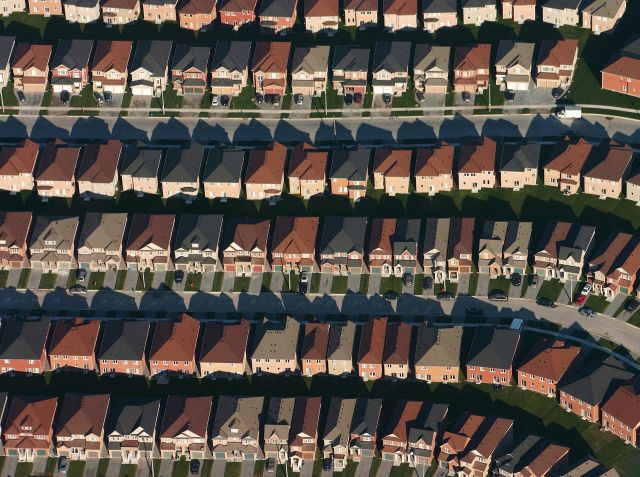Podcast: Play in new window | Download
Subscribe: RSS

If the housing market in the US were in fact recovering, it would be a miracle. Alas, (Wikipedia Photo)
To call it a miracle is to misunderestimate it by at least an order of magnitude: according to the US Commerce Department, sales of new single family homes in August surged 18% from July, and 33% from last year, “offering confirmation,” swooned CNBC, “that the housing recovery remains on course.”
Even while humming its charming little refrain of “Happy,” CNBC, like the many others who sang from the same sheet music, slipped in a few clunkers without elaborating or explaining: one, that new home sales account for only nine percent of the market, and thus (despite CNBC’s offered confirmation) are hardly determinative; and two, that despite the rise in sales, the stock of new houses still unsold hit its highest level in four years. Wait, what? You sell more than you have in six years, and end up with more unsold inventory than you’ve had in four years?
Either somebody has been on an ungodly — and ill-advised — building binge, or somebody is cooking the numbers. It would take a quant to analyze the numbers themselves. For example, what does the Commerce Department mean, exactly, when it says its numbers are “seasonally adjusted?” And why does it admit to margins of error from 16.3% to 21.7%?
What if, instead, one looked at KB Home, one of the largest builders of new homes in the country, to see how well they are doing in this six-year high? On the very day that the Commerce Department offered us all a hit on the recovery bong, KB Home lost ten percent of its share value after reporting third-quarter profits that were up four percent from last year.
Wait, what? They report increased earnings and take a major stock-market hit? Welcome to this side of the looking glass, Alice. The two problems with the earnings report were that it was much less than analysts expected, which on Wall Street is just one step shy of bankruptcy; and although earnings were up, the number of houses KB actually sold was down. Wait, what?
The average selling price of KB homes was up 9 percent over last year’s third quarter — more than twice the increase in KB’s profit. The number of homes KB sold dropped from 1825 in last year’s Q3 to this year’s 1793. Keep in mind that if you sell two million-dollar homes and one $200,000 home, the average price of the homes you sold is over $700,000. The demand for high-end homes has remained strong throughout the Great Recession, the problem is with the other 99 per cent.
As luck would have it, we have a report on that from RealtyTrac, out the same day as the hopium dream offered by the Commerce Department. August sales of all US residential properties were down half a percent from July and 16 per cent from a year ago. It was the fourth consecutive month of declining sales, offering confirmation that the housing recovery remains on course for hell in a handbasket.
It is becoming more and more obvious every day that high-end new homes cannot lead the market to recovery. KB specializes in the .o1 per cent, and has reached the point where its liabilities are about equal to its assets and its cash flow is positive only after filtering through a large team of creative accountants.
The only sense in which the housing recovery in the US remains on course is the sense in which, after its collision with the iceberg, the Titanic remained “on course” for New York.